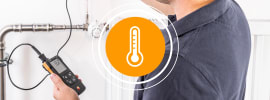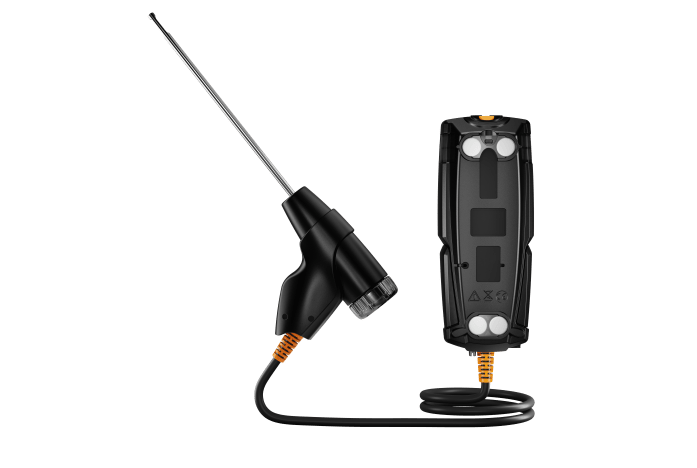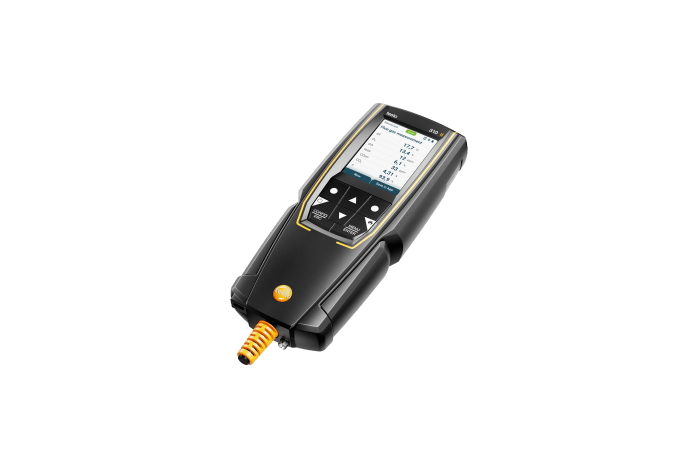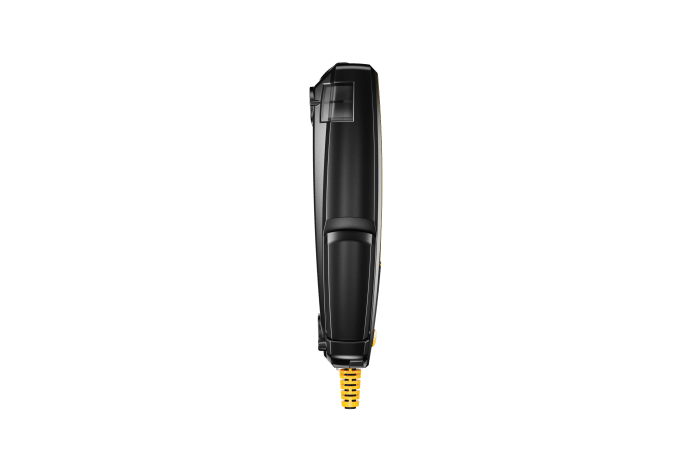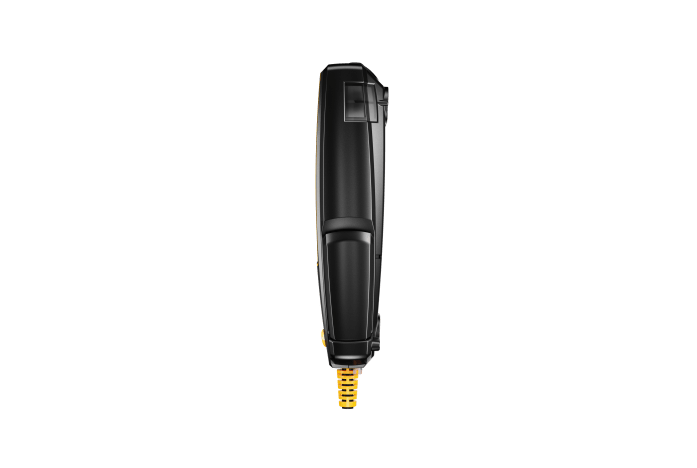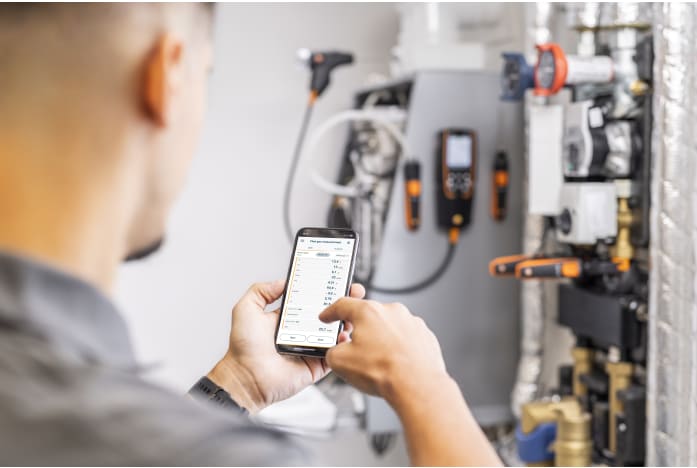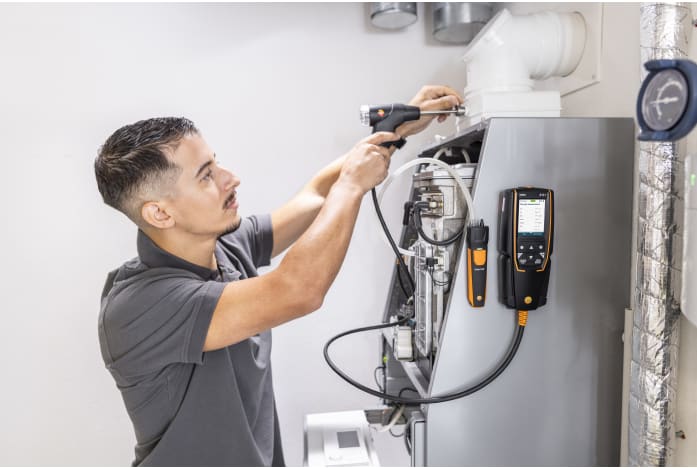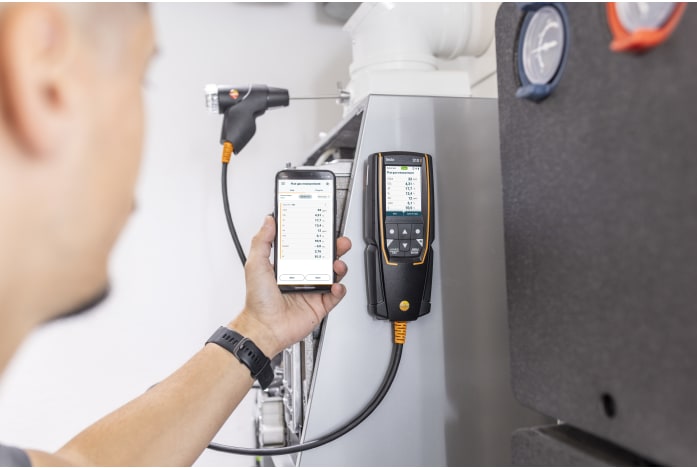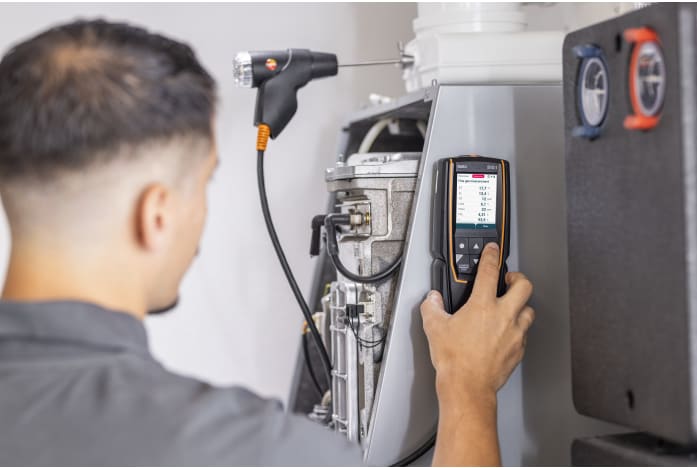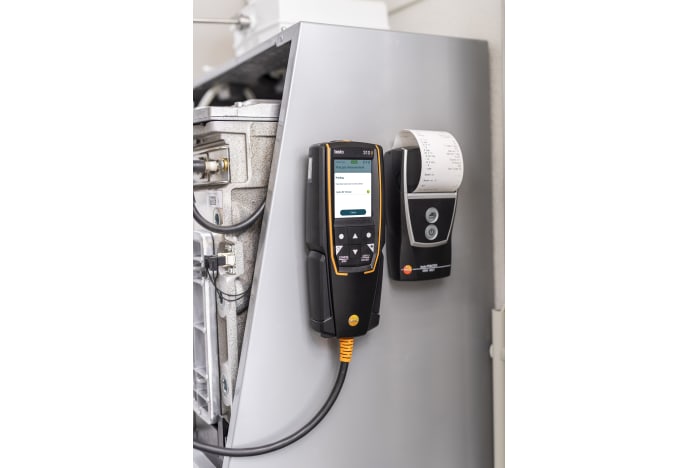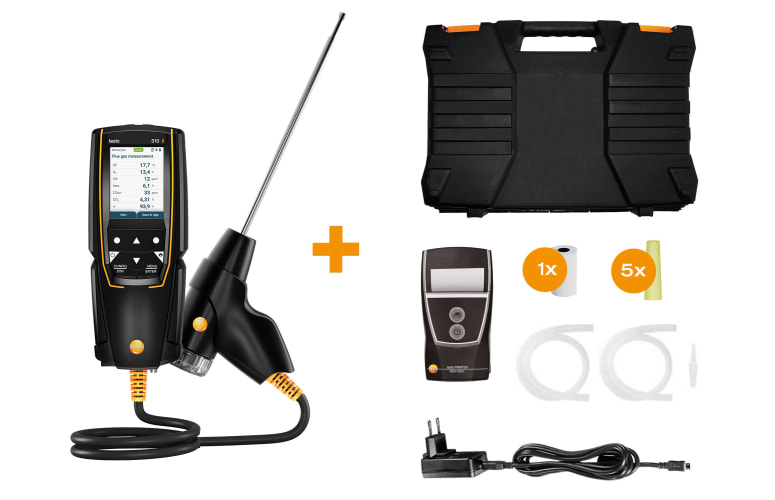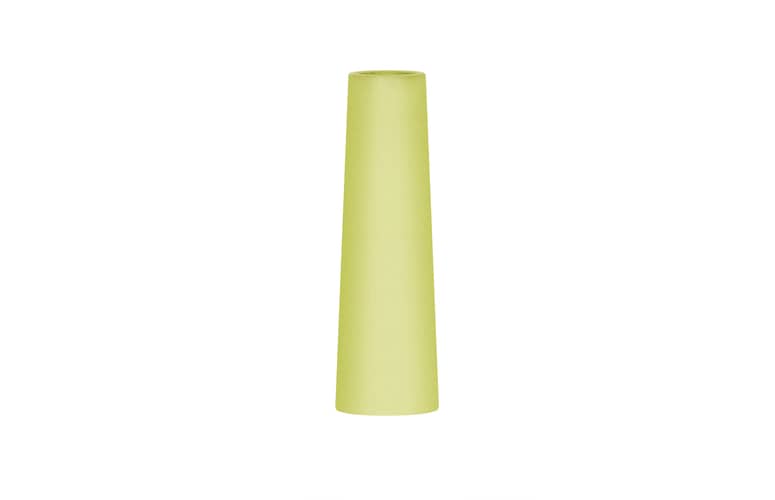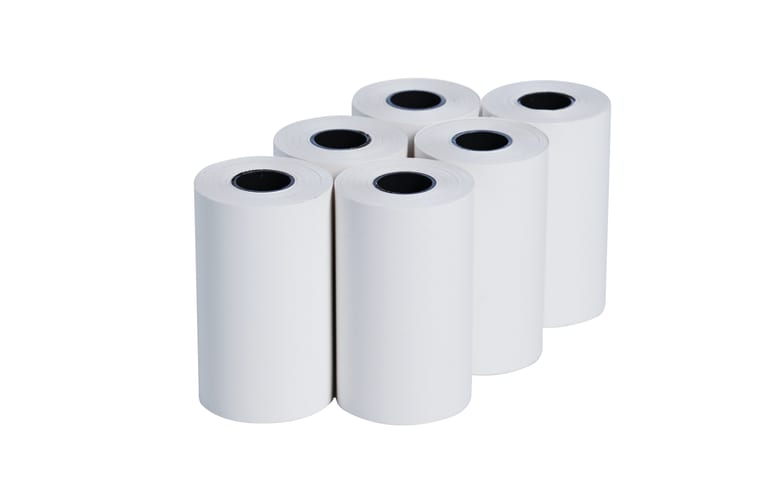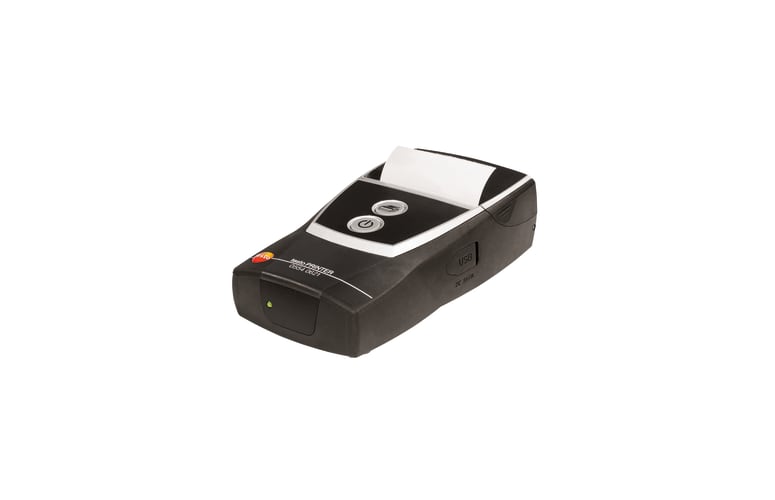Natančnost merjenja, prilagodljiv prikaz meritev, možnost sočasnega merjenja, intuitivno delovanje, trpežno ohišje, možnost povezave z aplikacijo testo Smart App: Naš analizator dimnih plinov testo 310 II ponuja vse, kar potrebujejo inštalaterji ogrevalnih sistemov in tehnični delavci za praktično delo na ogrevalnih sistemih.
Zanesljivo testiranje ogrevalnih sistemov z analizatorjem dimnih plinov testo 310 II za začetnike
.Kompaktni analizator dimnih plinov ponuja, poleg preprostega uporabniškega vmesnika, tudi menijsko navigacijo z štirimi integriranimi merilnimi meniji za dimne pline, vlek zraka, okoljski CO in tlak. Vsi rezultati meritev so na enem mestu vidni na zaslonu in jih je mogoče celo prilagoditi, zahvaljujoč visokoresolucijskemu grafičnemu zaslonu
Po potrebi lahko med merjenjem obdržite proste roke - saj lahko analizator dimnih plinov testo 310 II pritrdite na kovinske površine, na primer na gorilnik, s pomočjo magnetov na zadnji strani instrumenta. Vendar to ni edina praktična funkcionalnost: Aplikacija testo Smart omogoča upravljanje in konfiguriranje instrumenta prek funkcije oddaljenega upravljanja.
Robustna zasnova za zahtevna in umazana okolja, hitro izničevanje senzorja v 30 sekundah, enostavno zamenljiv filter na sondo in hitro praznjenje kondenzata omogočajo, da je analizator dimnih plinov optimalno orodje za mehanike naprav, saj je pametno zasnovan.Po potrebi se merilni rezultati lahko prenesejo na opcionalno na voljo Testo hitro tiskalnik preko vmesnika Bluetooth® ali pa se pošljejo po elektronski pošti in neposredno natisnejo na kraju samem.





